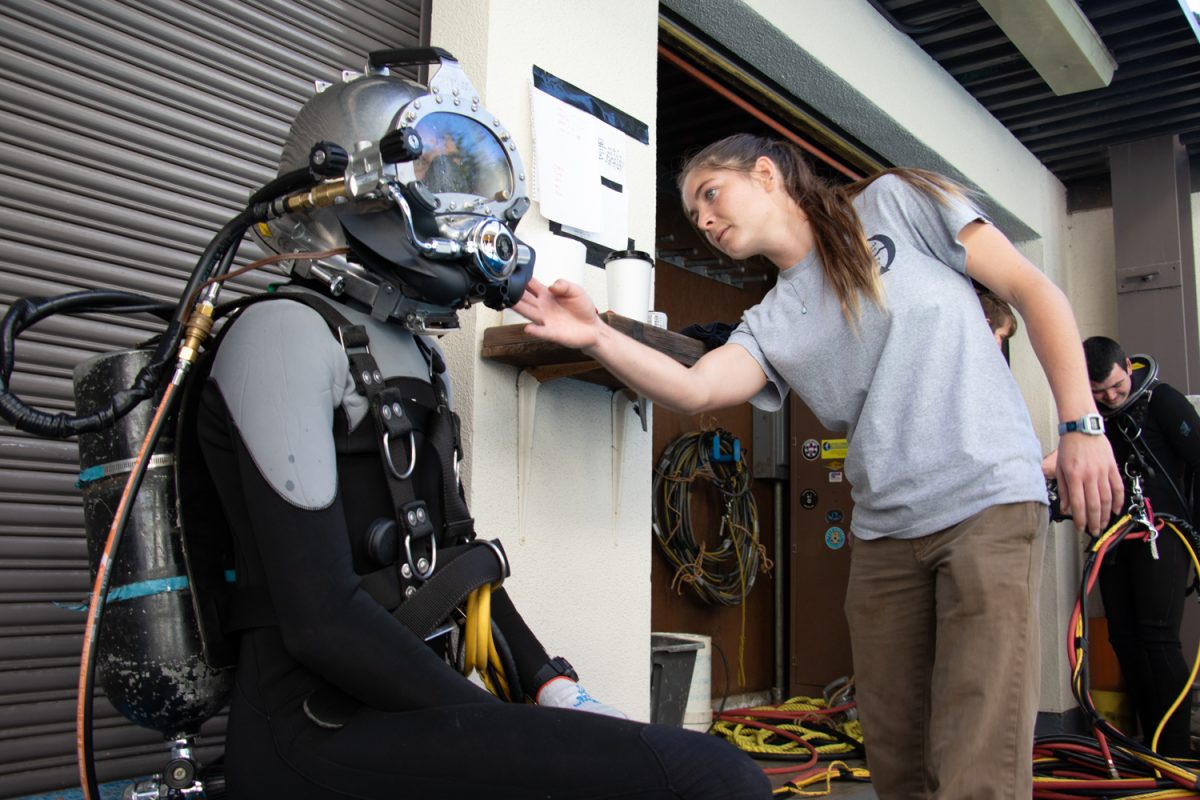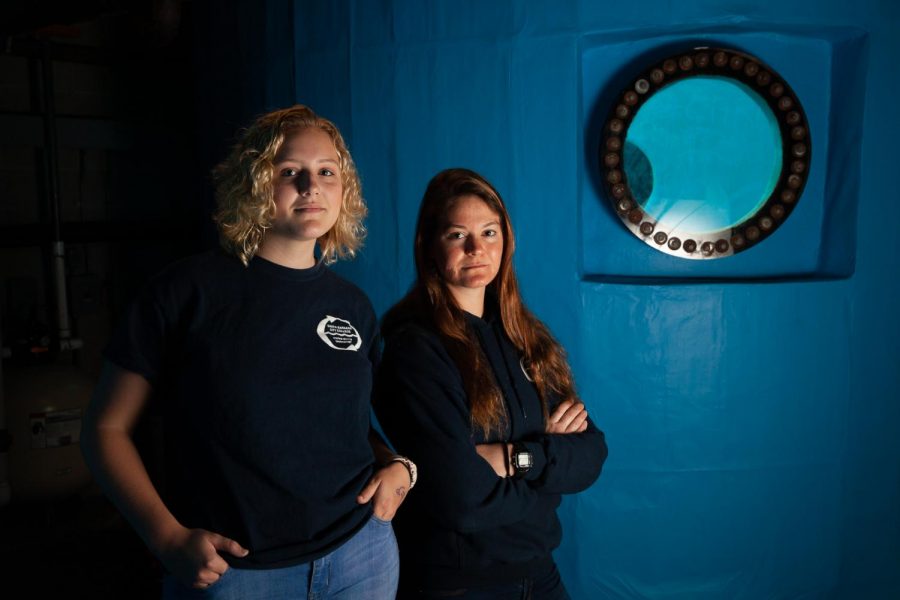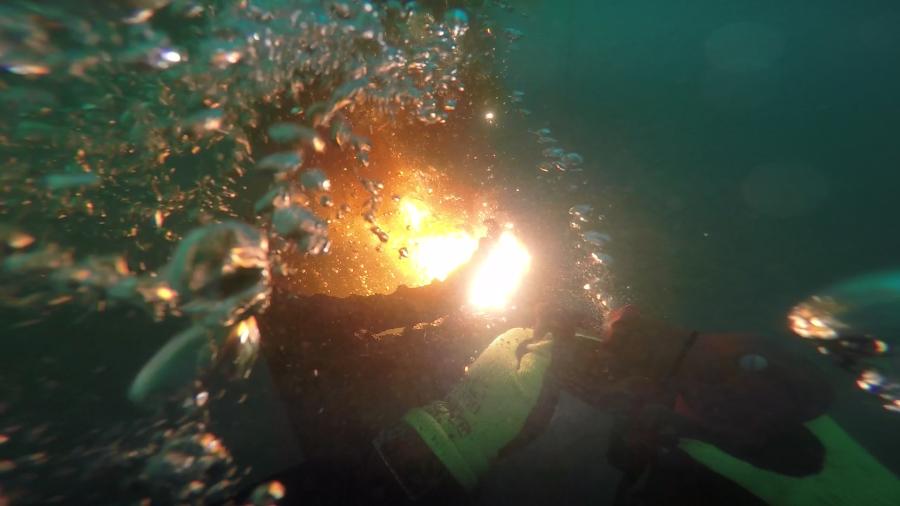The Marine Diving Technology Department offers hands-on opportunities for City College students who are interested in the science field.
Located under the bridge connecting City College’s east and west campuses sits an industrial workshop known as the Marine Diving Technologies Department. This is the home to the nation’s most accredited and oldest Marine Diving Program.
City College’s Marine Diving Technologies Program is “recognized worldwide for its vocational excellence,” according to the City College website. It is also the only community college degree program in the nation that is accredited by the International Diving Schools Association (IDSA).
“Santa Barbara was the mecca for commercial diving,” said Dallas Fowlie, adjunct professor in the marine diving technologies program. “This is where it all began; I think there’s a lot of history in these walls especially.”
In order for a student to be a part of the program, they must pass the required swim test.
City College’s Marine Diving Building consists of high-caliber machinery seen in the professional world for students to get training, such as Decompression Chambers, Saturation systems, two diving tanks, a welding tank, and a welding shop.
City College is the only school in the country that has this specific saturation system.
“When I did the program last year, we got to get in and stimulated what it’s like to do this for real,” explains Alina Snyder, student worker and lab technician.
A saturation system operates on a dive support vessel: while in operation, people live in these for upwards of twenty days, under constant pressure, and do not get out. Here, students get the chance to do a five-day run.
“The Program isn’t on a transfer route,” Fowlie said. “People do this more because they want to get straight to work.”
The program does include two options for completion. Two paths are available: the certificate of completion and the associate degree. The certificate of completion involves the program held on-site. The associate degree has additional requirements, having to fulfill degree requirements which include having to take classes such as those to become an EMT, computer aided design, marine biology and oceanography.
The program runs on a quarterly system. Every eight weeks, students rotate classes.
The first eight weeks are theory-based, giving students knowledge on equipment and first aid. The second eight weeks are when they suit up and enter the tanks. This is where students run through a series of underwater drills, blindfolded, while managing and working in the depths to simulate the low visibility of deep sea work. During their second semester, the students dive off the pier.
“It teaches a lot of hands-on mechanical stuff, which is why our program is beneficial,” Fowlie said. “Many of our guys go into other trades: plumbers, welders, scientific divers, all tradesmen, and pretty much anyone with a construction background.”
City College also offers courses in which students do not have to go into the water that are open to anyone.
Looking forward to the future, the department has its sights set on clean energy work. They hope to train students to contribute to the clean green economy. Recently, faculty of the department have been meeting with the Ventura County Workforce and discussing how they can begin to place City College divers in clean green economy projects. These include lots of upkeep and maintenance work, such as windmill farms and many other fields that are all shifting to clean energy.
“It’s advertised as diving, but you can use it for other trades.” Fowlie said.




